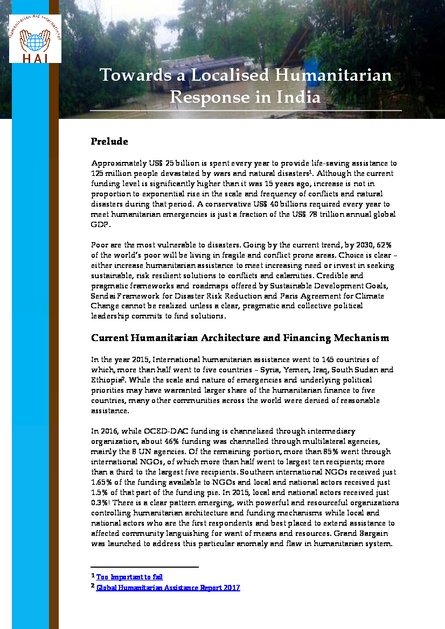
Approximately US$ 25 billion is spent every year to provide life-saving assistance to 125 million people devastated by wars and natural disasters1. Although the current funding level is significantly higher than it was 15 years ago, increase is not in proportion to exponential rise in the scale and frequency of conflicts and natural disasters during that period. A conservative US$ 40 billions required every year to meet humanitarian emergencies is just a fraction of the US$ 78 trillion annual global GDP.
Poor are the most vulnerable to disasters. Going by the current trend, by 2030, 62% of the world’s poor will be living in fragile and conflict prone areas. Choice is clear – either increase humanitarian assistance to meet increasing need or invest in seeking sustainable, risk resilient solutions to conflicts and calamities. Credible and pragmatic frameworks and roadmaps offered by Sustainable Development Goals, Sendai Framework for Disaster Risk Reduction and Paris Agreement for Climate Change cannot be realized unless a clear, pragmatic and collective political leadership commits to find solutions.